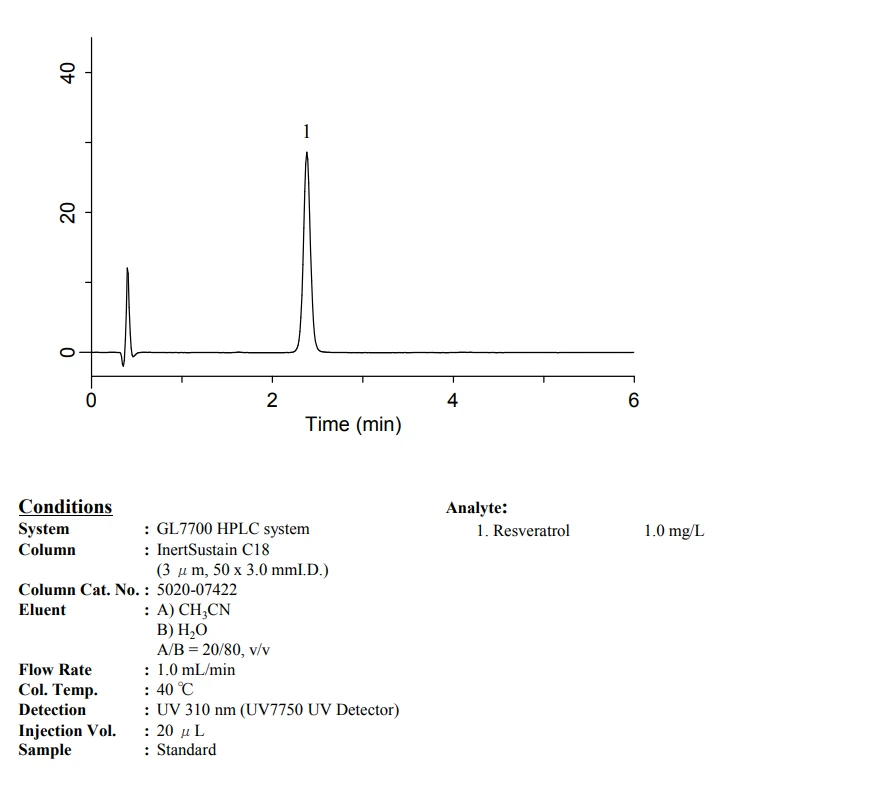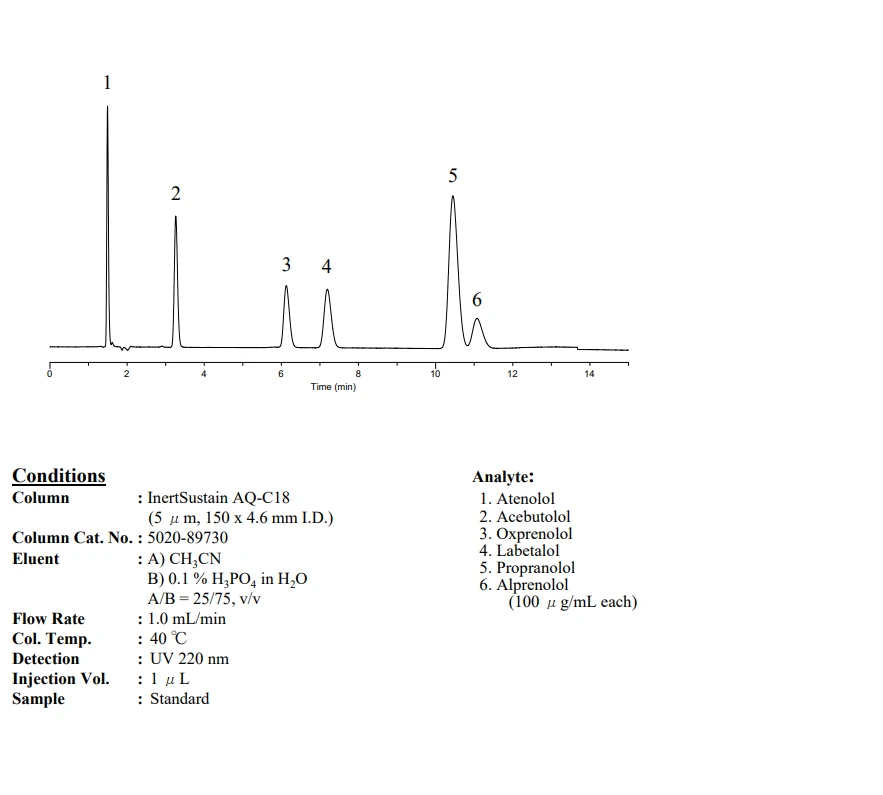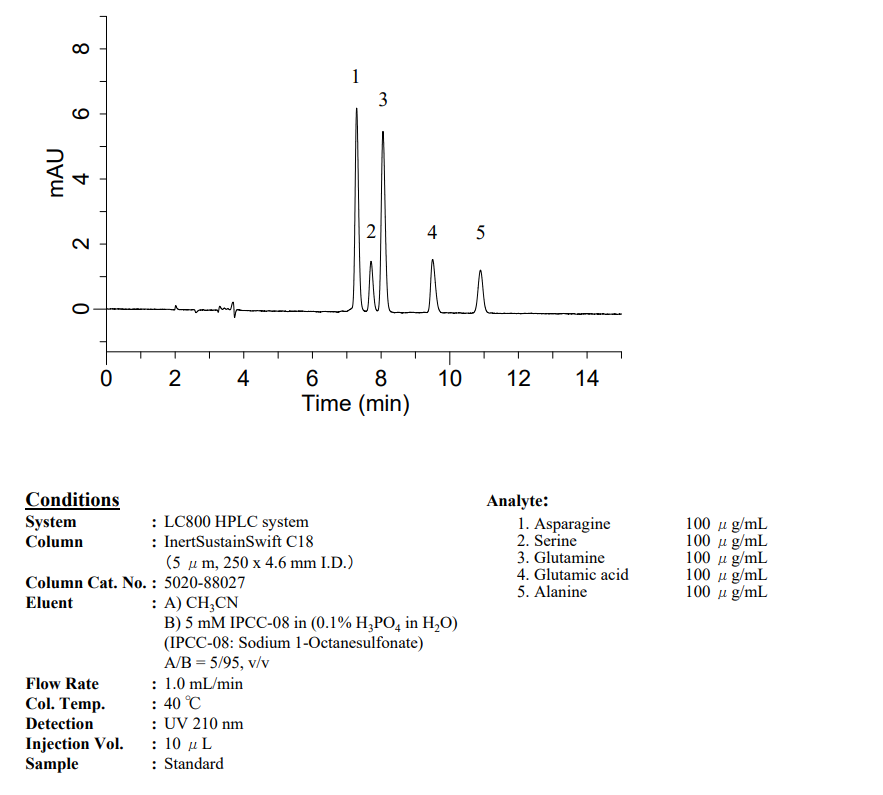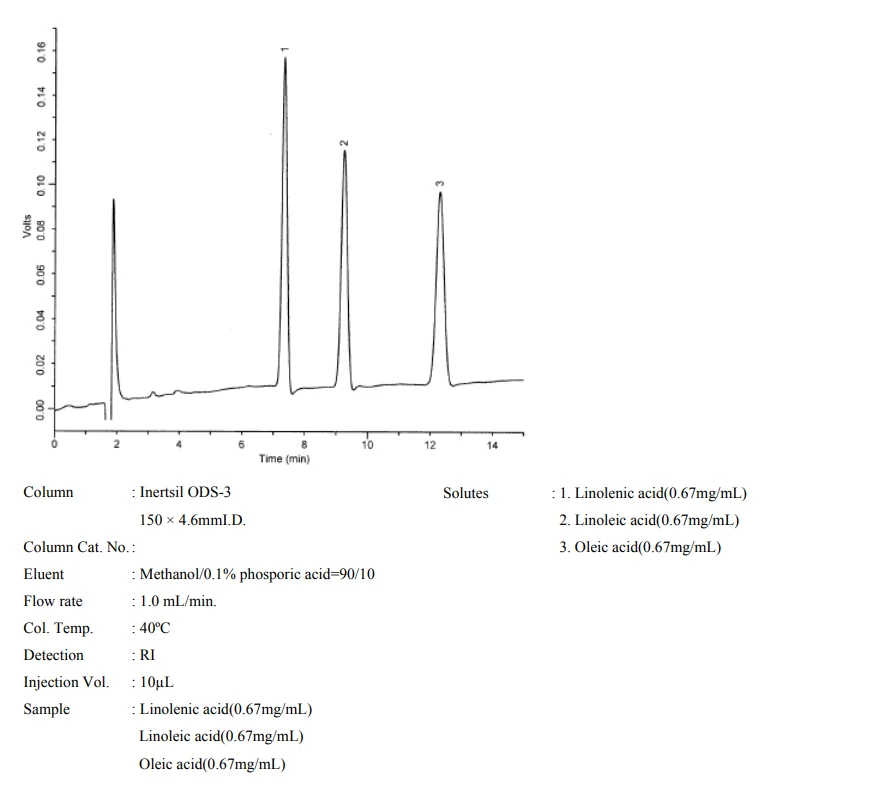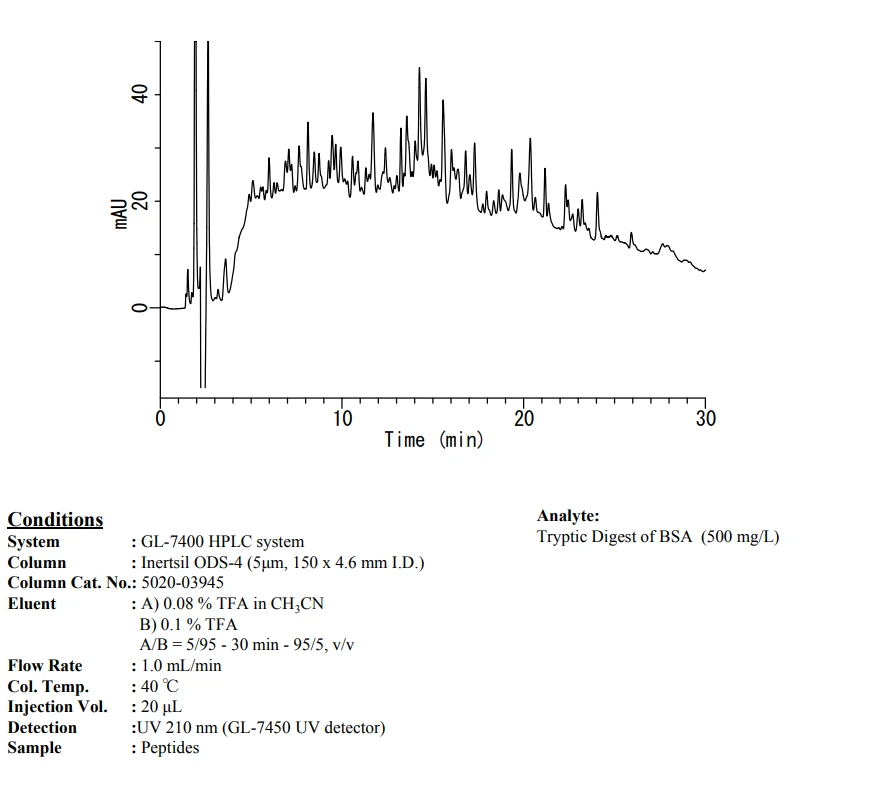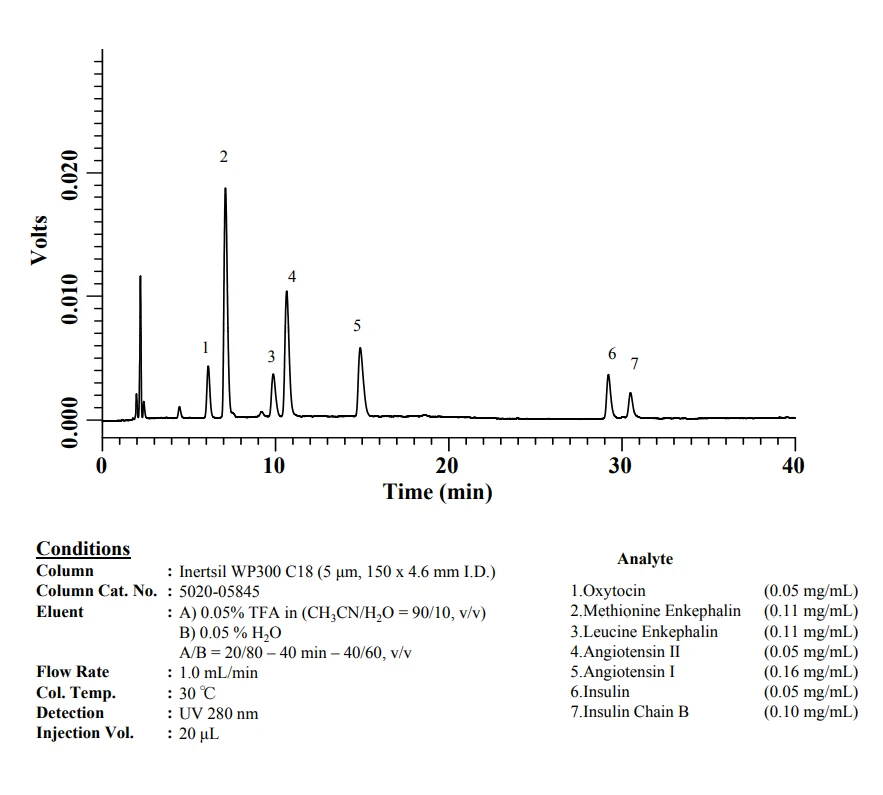-
HPLC Columns
- Close Menu ×
- C18 Columns
- Core-shell Columns
- C8 & C4 HPLC Columns
- HILIC HPLC Columns
- PFP & Phenyl HPLC Columns
- Bioseparation LC columns
- SEC HPLC Columns
- All HPLC Columns
- InertSustain C18 First choice for ultra-high inertness and high durability, delivering superior peak shapes with low back pressure.
- Inertsil ODS-3 Most popular C18, trusted for long-established methods, offering strong retentivity and high loading capacity.
- InertSustain AQ-C18 First choice for high-polarity compounds, delivering strong retention even under 100% aqueous mobile phases.
- Inertsil ODS-3V Validated version of ODS-3, designed for GLP/GMP compliance, ensuring batch-to-batch consistency.
- InertSustainSwift C18 Ultra-inert, fast-separation C18 for high-throughput LC-MS and LC-MS/MS with superior peak symmetry.
- InertSustain AX-C18 Mixed-mode C18 with anion exchange for strong retention of highly polar acidic compounds without ion-pairing.
- All C18 Columns visible-xs
- InertCore Biphenyl Core-shell biphenyl for UHPLC/HPLC with superior π-π selectivity and strong retention of aromatic compounds.
- InertCore C8 Core-shell C8 for UHPLC/HPLC with moderate hydrophobicity, enabling fast, efficient, reproducible separations.
- InertCore Plus C18 Core-shell C18 for UHPLC/HPLC with superior reproducibility, durability, and sharp peaks.
- InertSustain C8 Ultra-inert C8 column for rapid analysis of hydrophobic compounds with symmetric peaks across a wide pH range.
- Inertsil C8 Ultra-pure silica C8 column for rapid analysis of hydrophobic compounds, ideal for legacy methods.
- InertSustainSwift C8 Ultra-inert C8 column for low-polarity analytes, peptides, and oligonucleotides with optimized 200Å pore size.
- Inertsil C8-3 Strong retentivity, very inert, and low back pressure, based on the same silica and bonding as Inertsil ODS-3.
- Inertsil WP 300 Wide-pore C8 column for rapid, high-resolution separation of proteins and peptides with sharper peaks.
- Inertsil C4 Low-retentivity C4 column for rapid analysis of highly hydrophobic compounds like fat-soluble vitamins.
- All C8 & C4 Columns visible-xs
- InertSustain Amide First choice for HILIC mode, offering the strongest retention of polar compounds with superior stability in water-rich conditions.
- Inertsil HILIC Diol-bonded HILIC column for excellent peak shape and strong retention of highly polar basic compounds.
- InertSustain NH2 First choice for sugar analysis, offering superior stability, reproducibility, and compatibility with weakly acidic eluents.
- Inertsil NH2 Aminopropyl column for sugar analysis, highly retentive in normal phase with superior stability and reproducibility.
- ProteoSil HILIC Bioseparation-focused HILIC column, excelling in hydrophilic compound, peptide, glycan, and oligonucleotide analysis.
- All HILIC Columns visible-xs
- InertSustain PFP A pentafluorophenyl-modified column designed for enhanced separation of structurally similar compounds through multiple retention mechanisms, including π-π, dipole, and hydrogen bonding interactions.
- InertSustain Phenyl A directly bonded phenyl group gives the InertSustain Phenyl column unique reversed-phase selectivity, ideal for separating polar compounds and structural isomers via π-π and hydrogen bonding interactions.
- InertSustain Phenylhexyl A phenylhexyl-bonded column that offers complementary selectivity to traditional alkyl-chain columns, providing high inertness, reproducibility, and low back pressure.
Get the Right Column for Your Compound — InstantlyWhat compound are you analyzing? -
Sample Preparation
- Close Menu ×
- SPE Cartridges & Columns
- Spin Columns
- Proteomics Products
- InertSep QuEChERS kit
- Cleanup/Separating Bulks
- SPE Manifolds
- ALL Sample Preparation
- InertSep C18 Silica sorbent with high end-capping, ideal for lipid removal & pesticide residue analysis.
- InertSep C18-ENV C18 sorbent with low end-capping, optimized for water analysis & anionic surfactant removal.
- InertSep HLB Versatile SPE column for extracting non-polar to highly polar compounds, with a wide pH range (1-14).
- InertSep C8 Silica sorbent with octyl groups, offering weaker retention than C18 for highly retained compounds.
- InertSep SCX Silica-based SPE column with strong cation exchange and non-polar interactions for enhanced retention.
- InertSep SAX Monofunctional C18 sorbent with medium end-capping, allowing secondary interactions for versatile use.
- All SPE Cartridges & Columns visible-xs
- MonoSpin C18 High-permeability spin column for peptide desalting, drug extraction, and fast biological sample preparation.
- MonoSpin ProA Fast Protein A spin column for high-purity IgG antibody purification with >90% recovery.
- MonoSpin C18-CX Mixed-mode spin column with C18 and cation exchange for enhanced basic drug recovery.
- MonoSpin Phospholipid TiO₂/ZrO₂-coated spin column for efficient phospholipid removal and matrix effect reduction.
- MonoSpin SAX Strong anion exchange spin column for fast extraction of acidic drugs with high recovery.
- MonoSpin TiO TiO₂ spin column for phospholipid removal and organophosphorus pesticide purification.
- All Spin Columns visible-xs
- Exosome Purification
- Desalting
- Digestion
- Fractionation
- Phosphopeptide Enrichment
- Centrifuge Accessories
-
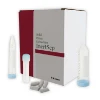 InertSep QuEChERS Kit High-purity extraction and cleanup kit for pesticide residue analysis in food and environmental samples.
InertSep QuEChERS Kit High-purity extraction and cleanup kit for pesticide residue analysis in food and environmental samples.
Get the Right Column for Your Compound — InstantlyWhat compound are you analyzing? -
GC Columns
- Close Menu ×
- InertCap Series
- TC Series
- GC Accesories
- All GC Columns
- InertCap 1MS General purpose, Hydrocarbons, PCBs, High Volatile solvents, Phenols
- InertCap 1 General purpose, Hydrocarbons, PCBs, High Volatile solvents, Phenols
- InertCap 5MS/Sil General purpose, Halogenated compounds, Phenols, Pesticides, FAME
- InertCap 5MS/NP General purpose, Halogenated compounds, Phenols, Pesticides, FAME
- InertCap 5 General purpose, Halogenated compounds, Phenols, Pesticides, FAME
- InertCap 624MS Residual solvents of Pharmaceuticals, VOCs, Alcohols
- All GC Columns visible-xs
Get the Right Column for Your Compound — InstantlyWhat compound are you analyzing? -
Instruments
-
 LD249 Gas Leak Detector Compact, easy-to-use leak detector with thermal conductivity sensor for fast, accurate gas detection. Replaces the LD239.
LD249 Gas Leak Detector Compact, easy-to-use leak detector with thermal conductivity sensor for fast, accurate gas detection. Replaces the LD239. -
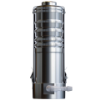 FM4: Air Sampler for PFAS Low-volume air sampler for PFAS enabling comprehensive analysis of both gas and particle phases in a single sampling using stage-optimized materials.
FM4: Air Sampler for PFAS Low-volume air sampler for PFAS enabling comprehensive analysis of both gas and particle phases in a single sampling using stage-optimized materials. -
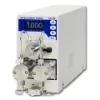 Intelligent Pump UI-32 Series Next-generation dual-plunger HPLC pump with ultra-low pulsation and automated pressure control for flow chemistry.
Intelligent Pump UI-32 Series Next-generation dual-plunger HPLC pump with ultra-low pulsation and automated pressure control for flow chemistry. -
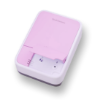 OralChroma Halitosis Measuring Device High-precision breath analyzer using gas chromatography to quantify VSCs in 4 minutes — fast, reliable, and maintenance-free.
OralChroma Halitosis Measuring Device High-precision breath analyzer using gas chromatography to quantify VSCs in 4 minutes — fast, reliable, and maintenance-free.
-
 LD249 Gas Leak Detector Latest model replacing LD239, with thermal conductivity detection for helium, hydrogen, and other gases.
LD249 Gas Leak Detector Latest model replacing LD239, with thermal conductivity detection for helium, hydrogen, and other gases. -
 GF1010 Digital Gas Flowmeter Portable, volumetric meter for accurate GC gas flow measurement without gas selection.
GF1010 Digital Gas Flowmeter Portable, volumetric meter for accurate GC gas flow measurement without gas selection.
-
 Intelligent Pump UI-32 Series Next-generation dual-plunger HPLC pump with ultra-low pulsation and automated pressure control for flow chemistry.
Intelligent Pump UI-32 Series Next-generation dual-plunger HPLC pump with ultra-low pulsation and automated pressure control for flow chemistry. -
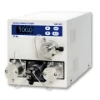 Intelligent Micro Pump MP-32 Series Compact micro pump with ultra-low pulsation and high-pressure stability, ideal for flow chemistry and precision dosing.
Intelligent Micro Pump MP-32 Series Compact micro pump with ultra-low pulsation and high-pressure stability, ideal for flow chemistry and precision dosing. -
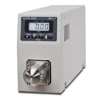 Auto BPR BP-11 Auto Back Pressure Regulator for the UI-22 Series, maintaining stable pressure for consistent flow.
Auto BPR BP-11 Auto Back Pressure Regulator for the UI-22 Series, maintaining stable pressure for consistent flow. -
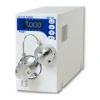 PCS Pump SP-32 Series Single plunger pump with real-time pressure control and low-pulsation flow—ideal for precise fluid delivery.
PCS Pump SP-32 Series Single plunger pump with real-time pressure control and low-pulsation flow—ideal for precise fluid delivery. - All HPLC Pumps visible-xs
-
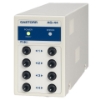 Gastorr AG Series Reliable, CPU-controlled degassing system for low-flow applications with independent chamber design.
Gastorr AG Series Reliable, CPU-controlled degassing system for low-flow applications with independent chamber design. -
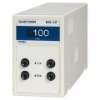 Gastorr BG Series High-performance degassing system with real-time vacuum display and independent chamber design.
Gastorr BG Series High-performance degassing system with real-time vacuum display and independent chamber design. -
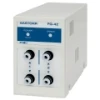 Gastorr FG-42 Solvent degassing system optimized for fluorinated solvents with real-time vacuum display.
Gastorr FG-42 Solvent degassing system optimized for fluorinated solvents with real-time vacuum display. -
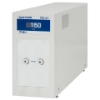 Gastorr PG Series High-flow degassing system for fractionating applications with real-time vacuum display.
Gastorr PG Series High-flow degassing system for fractionating applications with real-time vacuum display. - All Degassing Units visible-xs
-
-
Accessories
- Close Menu ×
- HPLC Accesories
- SPE Accessories
- GC Accessories
- HPLC Tubing
- Filters
- HPLC Fittings
- Solvent Bottle Caps and Other Accessories
- Gradient Mixer
- Regulator
- IDEX Accessories
- HPLC Column Hardware and Other Accessories
- Vials
- SPE Vacuum Manifolds
- SPE Gravity Manifolds
- Cleanup/Separating Bulks
- Glass Chromatography Columns
- General SPE Accessories
-
Applications & Industries
- Close Menu ×
- Featured
- PFAS Solutions Products and workflows for EPA and ISO-compliant PFAS testing in water, air, and soil.
- Flow Chemistry Solutions Integrated pumps and pressure regulators for continuous, high-temperature flow chemistry reactions.
- Life Science/Bio Products Spin columns and purification tools for antibody capture, protein cleanup, and bioseparation workflows.
- Gas/Air Sampling Equipment Sampling tools for capturing VOCs, aldehydes, and trace gases in environmental and industrial settings.
- Resources
- About
- Contact Us
Search
You have no items in your shopping cart.
What are C18 HPLC columns?
What are C18 HPLC Columns?
The C18 column is probably the most popular type of column for high-performance liquid chromatography (HPLC). Providing robust performance for analysis of a wide variety of compounds, C18 has been used in pharmaceuticals, materials, food, environmental, manufacturing, and other industries. C18 columns constitute a mainstay in many analytical chemists’ inventory for testing.
This article gives an overview of C18 columns - the chemical properties of the C18 functional group and the various types of C18 HPLC columns available.
💡 C18 columns are just one of many HPLC column types available. To explore the full range of column chemistries and find the right one for your application, visit our
HPLC Columns Guide →
C18 functional group
C18 is shorthand for the octadecyl alkyl substituent, which is a straight 18-long fully saturated carbon chain. Functionalized to silica gel, it is called octadecylsilyl and commonly referred to as ODS.
C18 exhibits the typical features of the alkyl group - non-polar and ionically inert in most common conditions. Retention from a C18 stationary phase comes from weak van der Waals intermolecular force that attracts hydrophobic compounds. C18 together with other alkyl phases such as C8 and C4 constitute the most fundamental type of reverse phase HPLC. C8 and C4 have fewer carbon constituents in their alkyl chains and thus provide less attraction towards hydrophobic compounds. Compounds are commonly tested if they will separate sufficiently on C18, C8, and C4 phases first before moving on to other phases.
Types of C18 columns
C18 has been functionalized on many different kinds of silica gels. A wide variety of HPLC columns have been developed for the analysis of many different analytes. Pore design of these columns vary significantly in terms surface area, pore volume, pore diameter, and other parameters. We discuss different types of C18 columns here.
The most common application of C18 phase is the analysis of small particles which have <5,000 Da molecular weight. These columns are called small or narrow pore C18 columns. These columns feature a pore diameter that is usually around 8-12 nm which leads to exclusion of large particles from the pore volume. Column performance is dependent on how well the bonded phase is functionalized to the silica gel - the amount of C18 groups on the phase or carbon load, the bonding type of the C18 group, and how well residual silanols have been end-capped.

InertSustain C18 from GL Sciences is a narrow pore column featuring all the modern technologies for C18 HPLC columns. At a 10 nm pore size with a 14% carbon load, it is especially suited for the analysis of many small particles. A new surface modification method provides InertSustain C18 with a uniformly bonded phase and high degree of end-capping allowing high inertness, high efficiency, and wide pH compatibility for a wide range of analyses.
Samples analyzed using mobile phases with higher aqueous content are usually difficult to separate using a normal C18 column. The usual cause is the C18 groups preventing access of the water molecules into the pore volume in a phenomenon called phase dewetting. Aqueous C18 columns are designed to tackle this problem by having some phase modifications such as a slightly lower carbon load than normal C18 columns.

InertSustain AQ-C18 is a modified version of InertSustain C18 designed for water-rich mobile phases. InertSustain AQ-C18 has a different bonding scheme than InertSustain C18 allowing it to provide retentivity for basic, neutral, and acidic compounds even with a 100% water mobile phase.
For faster chromatographic runs, C18 columns with larger pore sizes and lower carbon load are employed. These fast or rapid C18 columns allow for shorter analyte paths through the column for quicker runs. The sacrifice is that peaks are closer in results, making it crucial to have a well-bonded phase in order to preserve comparable peak shapes with non-rapid C18 columns.

For faster chromatographic runs, check out InertSustainSwift C18. InertSustainSwift C18 has a larger pore size (20 nm) than InertSustain C18. Using the same modern silica modification technology as InertSustain C18, InertSustainSwift C18 can process runs faster while preserving relative peak distances and peak shapes.
For large molecules such as proteins and peptides, wide pore C18 columns are used. The pore sizes of these columns are even larger than fast columns, usually around 30 nm. Unlike fast columns, however, the large pore size exists not for a quicker run time but for large molecules to be able to access the pore volume. Good wide pore columns will feature good phase definition in order to deliver excellent analyte resolution.
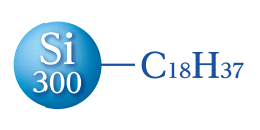
Inertsil WP300 C18 is a 30 nm wide pore column designed for analysis of biomolecules such as proteins and peptides. Inersil WP300 features the same silica technologies such as excellent phase bonding and high-degree of end-capping to deliver the same column performance as narrow pore columns for large molecules.
There are other C18 phases that exist with modified phases for specialized applications such C18 modified with additional functional groups for enhanced steric selectivity or have interspersed ionizable groups for mixed-mode interaction. For more, check out GL Sciences’ full selection of C18 columns.
|
Column |
Features |
USP Code |
Particle Size (µm) |
Pore Size (nm) |
Surface Area (m2/g) |
Carbon Loading |
End-Capping |
Inertness |
Recommended pH range |
|
First choice with ultra-high inertness and high durability |
L1 |
2, 3, 5, 10 |
10 |
350 |
14 |
Yes |
★★★★★ |
1 - 10 |
|
|
First choice for high polar compounds |
L1, L96 |
1.9, 3, 5 |
10 |
350 |
13 |
Yes |
★★★★★ |
1 - 10 |
|
|
First analysis with ultra-high inertness and high durability |
L1 |
1.9, 3, 5 |
20 |
200 |
9 |
Yes |
★★★★★ |
1 - 10 |
|
|
Analysis of anionic highly polar compounds |
L1, L78 |
3, 5 |
20 |
200 |
8 |
Yes |
★★★★ |
1 - 9 |
|
|
For peptides and protein with 200Å pore size |
L1 |
1.9, 3 |
20 |
200 |
9 |
Yes |
★★★★★ |
1-10 |
|
|
Ideal for analyses requiring a high number of theoretical stages |
L1 |
2.6 |
9 |
200 |
15 |
Yes |
★★★★ |
1 - 10 |
|
|
Ultra-high retentivity, High-density bonding of C18 phase |
L1 |
3, 5 |
10 |
450 |
23 |
Yes |
★★★★★ |
2 - 7.5 |
|
|
Ultra-high inertness, High plate count, Medium retentivity |
L1 |
2, 3, 5 |
10 |
450 |
11 |
Yes |
★★★★★ |
2 - 7.5 |
|
|
Inertsil ODS-4 Validated column |
L1 |
3, 5 |
10 |
450 |
11 |
Yes |
★★★★★ |
2 - 7.5 |
|
|
Strong retentivity, Lower column backpressure, Very inert |
L1 |
2, 3, 4, 5, 10 |
10 |
450 |
15 |
Yes |
★★★★ |
2 - 7.5 |
|
|
Inertsil ODS-3 Validated column |
L1 |
3, 5 |
10 |
450 |
15 |
Yes |
★★★★ |
2 - 7.5 |
|
|
Weak retentivity, for hydrophobic compounds |
L1 |
3, 5 |
10 |
450 |
8.5 |
Yes |
★★★★ |
2 - 7.5 |
|
|
High steric selectivity |
L1 |
3, 5 |
10 |
450 |
29 |
None |
★★★ |
2 - 7.5 |
|
|
A polar functional group embedded |
L1 |
5 |
10 |
450 |
9 |
None |
★★★★ |
2 - 7.5 |
|
|
Analysis of high weight molecules |
L1 |
5 |
30 |
150 |
9 |
Yes |
★★★★ |
2 - 7.5 |
|
|
Ultra-pure silica gel is used |
L1 |
5 |
15 |
320 |
18.5 |
Yes |
★★★★ |
2 - 7.5 |
|
|
Inertness 1st generation |
L1 |
5, 10 |
10 |
350 |
14 |
Yes |
★★ |
2 - 7.5 |
Stereoselectivity vs. Relative Retention of GL Sciences Reverse Phase columns
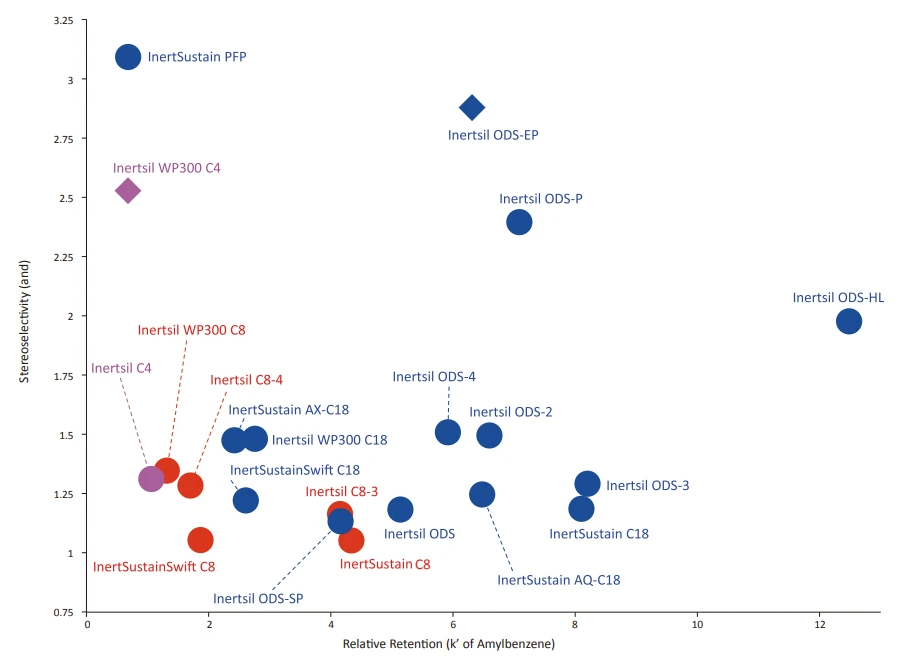
C18 HPLC Columns Applications
Here are a few applications for several compounds for C18 columns:
See the rest of C18 applications in our Applications section.
Leave a comment

